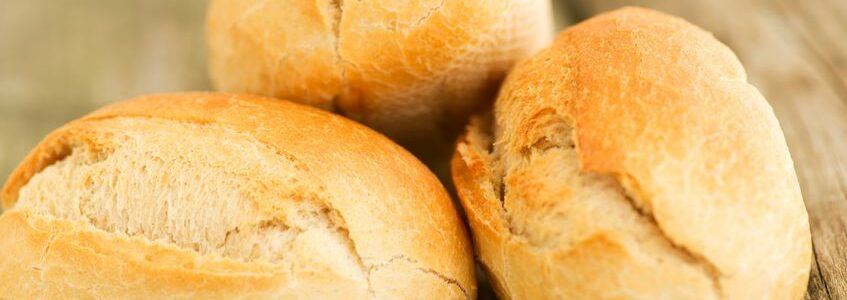
Who can resist the allure of a freshly baked bread roll? Soft, fluffy, and utterly irresistible, bread rolls are the epitome of comfort food. However, achieving that perfect texture requires more than just throwing together a few ingredients. It’s a delicate dance of precise techniques and quality ingredients that culminate in a symphony of flavor and texture. Join us as we explore the secrets of crafting the perfect bread roll that will have everyone clamoring for more.
Bread Roll Formulation
The foundation of any great bread roll begins with high-quality ingredients. Opt for bread flour with a protein level of 10 to 11%. This protein content, on a 14% moisture basis, provides the necessary structure and gluten development for soft, fluffy rolls. Also, you’ll want to consider replacing some or all of the water in the dough with milk or milk powder. The proteins and sugars present in milk tenderize the crumb and add richness to the flavor, resulting in an even softer and more flavorful roll.
Next up, proper mixing and dough development. Mixing the dough is not just about blending ingredients together; it’s about developing the gluten network that gives bread its structure and elasticity. Take your time to develop the dough until it becomes smooth and elastic, which can take anywhere from six to 10 minutes on high speed, or up to 20 mins on low speed. This step is crucial for achieving that perfect texture.
Now, let’s talk about fermentation and proofing. Properly fermentation and proofing the dough is essential for creating soft, airy bread rolls. Allow the bulk dough to rise in a warm, draft-free environment until it has doubled in size. This process allows the yeast to work its magic, creating those delightful air pockets that give bread its light and airy texture.
Baking Better Bread Rolls
The journey to the perfect bread roll doesn’t end there. Once the rolls are baked to golden perfection, there’s one final step that takes them from great to extraordinary: a brush or spray of melted butter. This indulgent touch not only adds flavor but also keeps the crust soft, giving the rolls a glossy finish that is simply irresistible.
To ensure your rolls stay soft and fresh longer, store them at room temperature. Avoid the temptation to refrigerate them, as cold temperatures can cause them to dry out and become stale.
Last but not least, the yeast. Cream or liquid yeast is preferred in high-volume bakeries. If fresh yeast or active dry yeast is used, proper activation is key to achieving a good rise and a light, airy texture. If you decide on instant yeast, opt for an osmotolerant variety for improved performance, especially in high-sugar formulations.
Adding fat to the dough, such as butter or oil, further enhances the softness and moisture of the rolls. Incorporate the fat into the dough during the mixing or kneading process, ensuring it’s evenly distributed. But remember, handle the dough gently and avoid overworking it to maintain that light and fluffy texture.
Watch the Wisdom Wednesday here:
Crafting the perfect bread roll is an art form that requires patience, precision, and a deep understanding of the ingredients and techniques involved. But with the right knowledge and a little bit of practice, you too can master the art of creating soft, fluffy, and utterly delicious bread rolls that will leave everyone asking for more.
Want to stay up-to-date with BAKERpedia? Sign up for our newsletter today!

